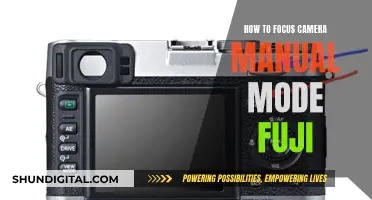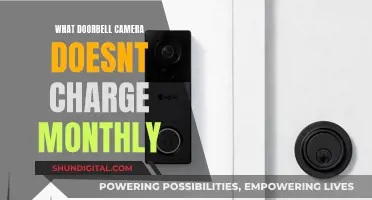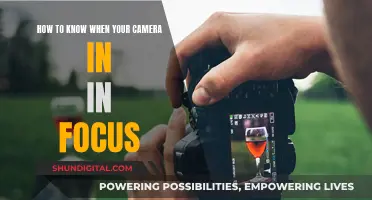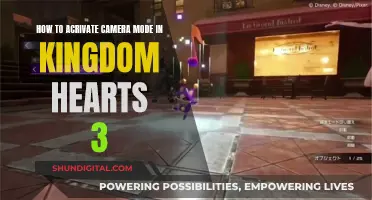
The first smartphone with a camera was the Sharp J-SH04, also known as the Sharp J-Phone, which was released in Japan in November 2000. The phone had a 110,000-pixel CMOS sensor and a 256-image colour display. It was the first camera phone capable of sending picture messages.
| Characteristics | Values |
|---|---|
| Name of the first smartphone with a camera | Kyocera Visual Phone VP-210 |
| Date of release | May 1999 |
| Country of release | Japan |
| Camera resolution | 0.11MP |
| Number of pictures it could take | 20 |
| Price | 40,000 yen (~$325 in 1999, or about $521 today) |
What You'll Learn
- The first camera phone was the Kyocera VP-210, released in Japan in May 1999
- The first camera phone with colour was the Kyocera Visual Phone VP-210
- The first camera phone in the US was the Sanyo SCP-5300, released in November 2002
- The first camera phone to send images electronically was the Sharp J-SH04, released in November 2000
- The first mass-market camera phone was the Sharp J-SH04, released in November 2000

The first camera phone was the Kyocera VP-210, released in Japan in May 1999
The Kyocera VP-210 was also known as the "Visual Phone" and was covered by CNN when it was announced in May 1999. It was called a "mobile videophone" at the time and could store up to 20 JPEG digital images, which could be sent over email. Alternatively, the phone could send up to two images per second over Japan's Personal Handy-phone System (PHS) cellular network.
While Kyocera claims to have launched the first camera phone sold to the general public, there are multiple other claims for this milestone. For example, Samsung has taken credit for selling the first camera phone with the SCH-V200, which was released in South Korea in June 2000. However, this phone could not send pictures directly to another device and instead required a connection to a PC to transfer photos.
Another contender for the title of the first camera phone is the Sharp J-SH04, also known as the Sharp J-Phone, which was released in Japan in November 2000. This phone integrated the hardware of the phone and camera, allowing owners to send 0.11MP images directly from the device via email.
Charging Your Action Camera: A Quick Guide
You may want to see also

The first camera phone with colour was the Kyocera Visual Phone VP-210
The Kyocera Visual Phone VP-210 was the first commercially available mobile camera phone and the first mobile colour videophone. The phone was developed by the Kyocera Corporation, an electronics manufacturer based in Kyoto, and it retailed for 40,000 yen, or about US$325 in 1999.
The phone included a forward-facing camera, which pre-dated the popularity of "selfies" in the early 2000s. Its single front-facing 0.11-megapixel camera could send two images per second through Japan's Personal Handy-phone System (PHS) mobile phone network. The camera could also store up to 20 JPEG photos and share them via email.
The Kyocera Visual Phone VP-210 was a significant milestone in the history of mobile communication, paving the way for the integration of cameras in mobile phones that would become ubiquitous in the years to come.
The development of the Kyocera Visual Phone VP-210 began around 1997 and was led by Kazumi Saburi, one of the section managers at Kyocera's Yokohama research and development center. Saburi's team faced technical challenges, including the placement of the camera module within the phone and increasing its data transmission rate. Despite these challenges, they successfully brought the world's first camera phone to market in 1999.
Charging Cameras While Streaming: A Guide to Power Sources
You may want to see also

The first camera phone in the US was the Sanyo SCP-5300, released in November 2002
The SCP-5300 was Sanyo and Sprint's flagship camera phone. The model was only available for Sprint, and it was a CDMA device. The phone measured 3.7" x 1.9" x 1.1" and weighed 4.13 ounces, making it small enough to fit into most pockets. The phone had a normal and an extended battery option, with the latter being necessary for longer battery life.
The SCP-5300 had a range of features, including a 300-name phone book, voice-activated dialling, voice memo, Spanish/English menus, caller ID, text messaging, a vibrating ringer, voicemail, games, a calendar, and a world clock. It also had a built-in VGA digital camera with a flash, a self-timer, white balance, colour tone, and zoom settings. The camera could take pictures at three different settings: high (640x480 pixels; 10 to 15 images), medium (320x240; 30 to 68 images), and low (160x120 pixels; 63 to 74 images).
The SCP-5300 was well-received, with reviewers praising its design, features, and camera quality. It was included in Time magazine's list of the most influential gadgets.
Mastering Camera Raw White Balance
You may want to see also

The first camera phone to send images electronically was the Sharp J-SH04, released in November 2000
The Sharp J-SH04, also known as the Sharp J-Phone, was the first camera phone to send images electronically. It was released in Japan in November 2000.
The J-SH04 was the third camera phone ever made, following the Samsung SCH-V200 and the Kyocera Visual Phone VP-210. However, the J-SH04 was the first camera phone that allowed users to send images directly from the device via email. This was made possible through the integration of the phone and camera hardware, which was not the case with the Samsung SCH-V200.
The Sharp J-SH04 had a resolution of 110,000 pixels (0.11 megapixels) and a 256-image colour display. It was initially only available in Japan and cost 40,000 yen, which is approximately $521 in 2024.
The development of the Sharp J-SH04 was aided by LightSurf, a company founded by Philippe Kahn, who is credited with creating the first working camera phone in 1997.
The Evolution of Folding Cameras: A Historical Perspective
You may want to see also

The first mass-market camera phone was the Sharp J-SH04, released in November 2000
The Sharp J-SH04, also known as the Sharp J-Phone, was the first mass-market camera phone. Released in Japan in November 2000, it was the third camera phone to hit the market.
The J-SH04 was a collaboration between Sharp and J-Phone (now SoftBank Mobile). It was capable of taking photos at 110,000-pixel resolution (0.11-megapixel) and could send these images directly from the device via email. This was made possible by the Sha-Mail (Picture-Mail) infrastructure, developed by American technologist Philippe Kahn and his company LightSurf.
The J-SH04 was initially only available in Japan, but it marked the start of the camera phone trend. In 2003, more camera phones were sold worldwide than standalone digital cameras, and by 2006, camera phones had surpassed sales of both digital and film cameras.
Cameras Behind Classic Movies: 1922's Filming Equipment
You may want to see also
Frequently asked questions
The first smartphone with a camera, the Kyocera Visual Phone VP-210, was released in May 1999.
The first smartphone with a camera was made by Kyocera.
The Kyocera Visual Phone VP-210 was initially only available in Japan.
The Kyocera Visual Phone VP-210 had a 0.11MP camera and could store up to 20 photos. It also had an integrated stand for taking selfies.







